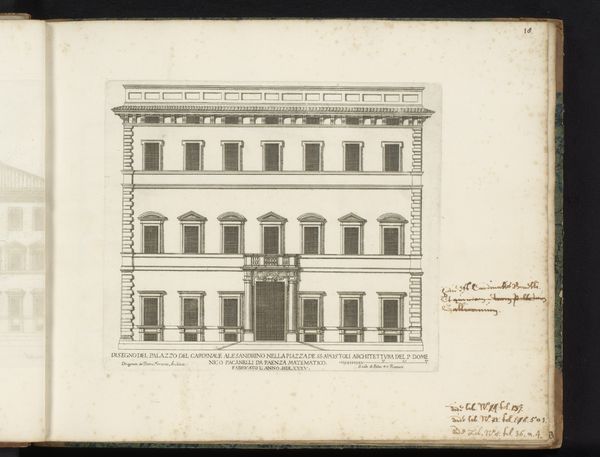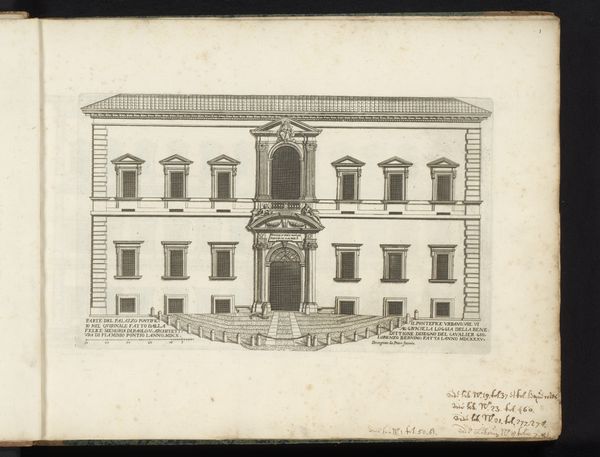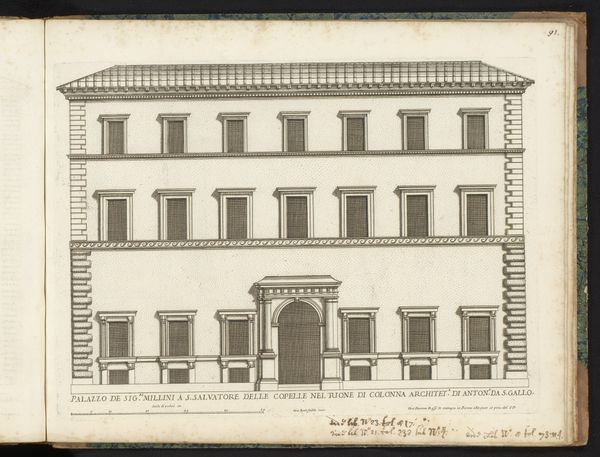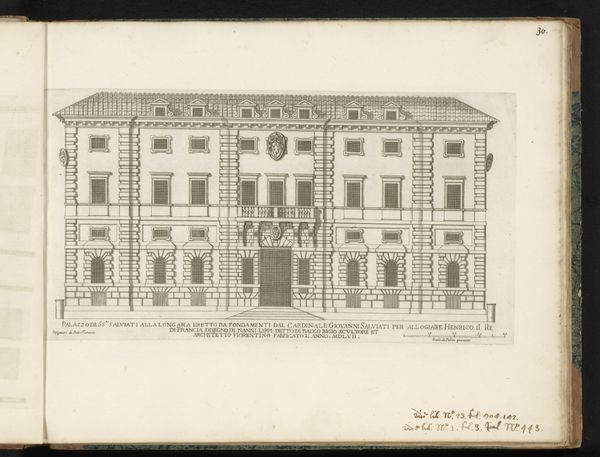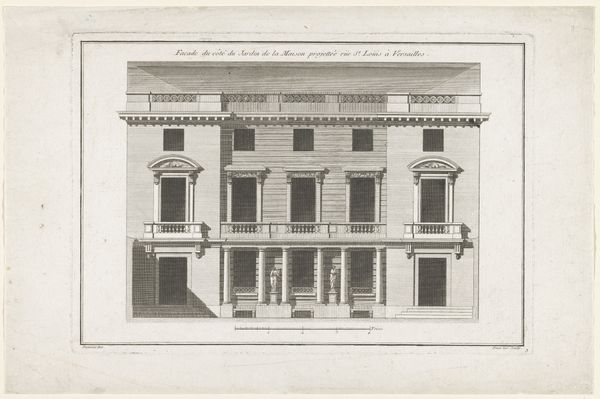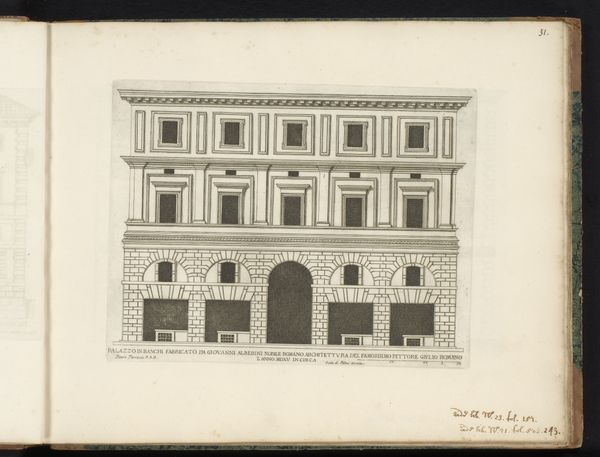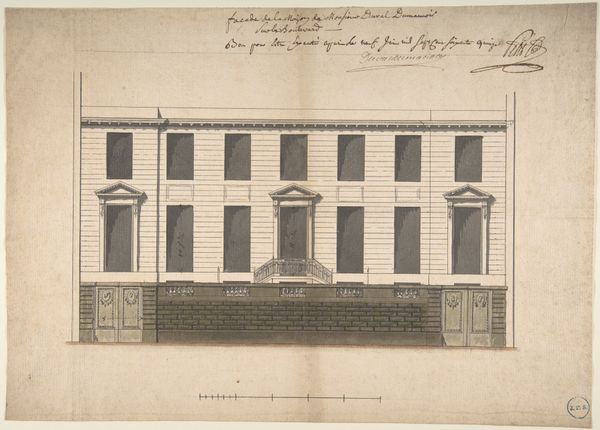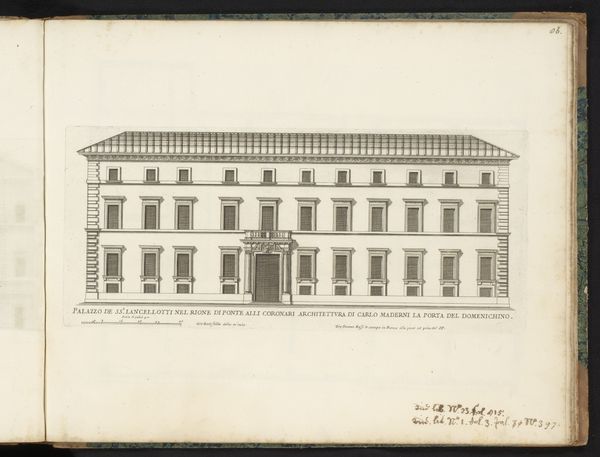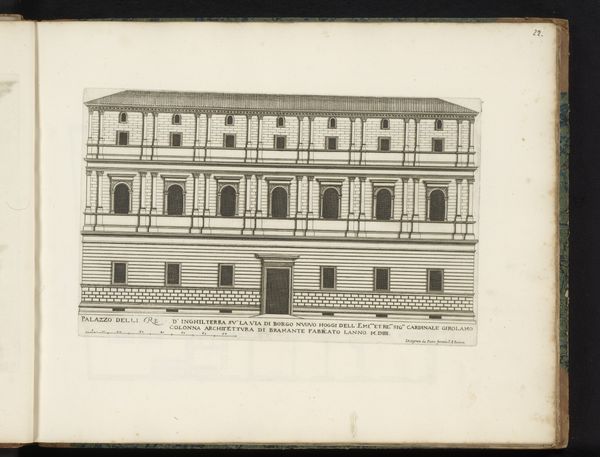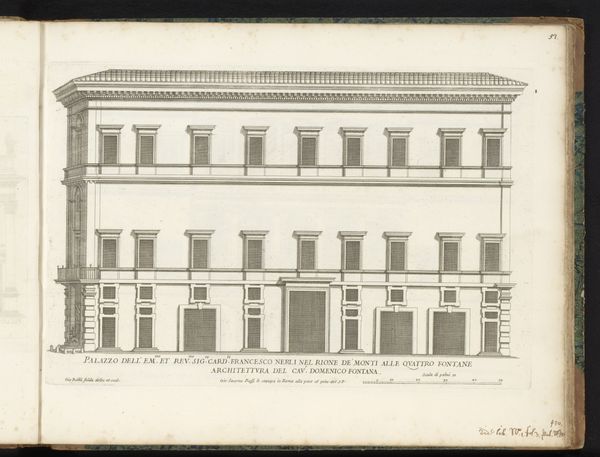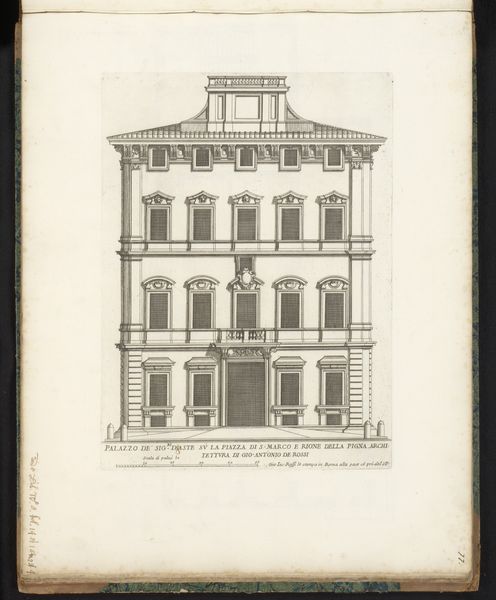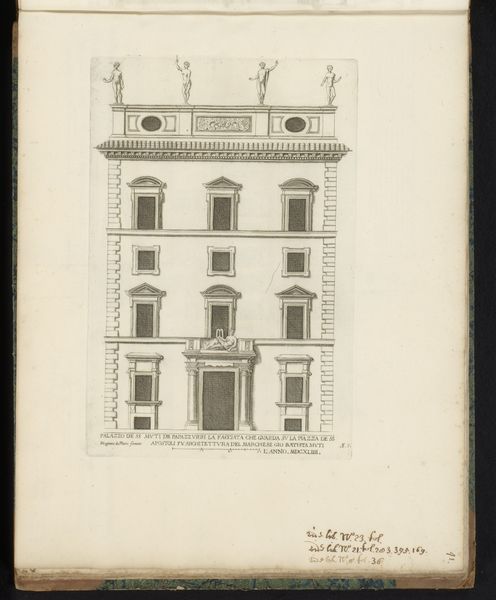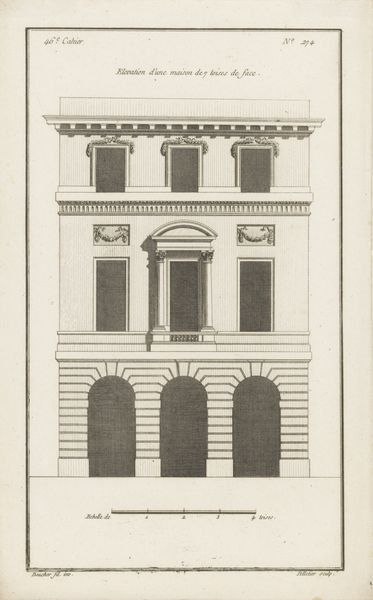
print, engraving, architecture
#
baroque
# print
#
cityscape
#
engraving
#
architecture
#
building
Dimensions: height 310 mm, width 288 mm
Copyright: Rijks Museum: Open Domain
This print of the rear facade of the Palazzo Silvestri was made by Giovanni Battista Falda in the late 17th century, using etching. This intaglio printmaking technique involves biting lines into a metal plate with acid, then inking the plate so that the ink is held in the etched recesses, and finally transferring the image to paper in a press. Look closely, and you can see how Falda exploits the crispness of the etched line to render the architecture with precision. The controlled lines give a sense of the building’s monumental scale. It is a testament to the engraver's skill, and the amount of labor it took to produce the detailed image. Prints like this played a crucial role in disseminating architectural ideas. The print embodies the social context of the time, where craftsmanship and artistic skill were intertwined with the patronage of wealthy families like the Silvestri. Appreciating the print involves not just seeing the image, but also understanding the processes involved, and its place within the social and economic fabric of its time.
Comments
No comments
Be the first to comment and join the conversation on the ultimate creative platform.
